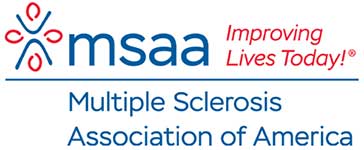Treating Multiple Sclerosis Relapses

Relapses, also referred to as exacerbations, attacks, flare-ups, episodes, or bouts, are initially experienced by most people diagnosed with multiple sclerosis (MS). Relapses occur with relapsing-remitting and sometimes secondary-progressive forms of MS. Relapses do not occur with primary-progressive MS, although individuals may experience day-to-day fluctuations in how they feel.
- During a relapse, people with MS will have a temporary worsening or recurrence of existing symptoms and/or the appearance of new symptoms. This typically lasts for a few days to a few months, followed by a complete or partial recovery (remission).
- With relapses, inflammation is occurring along the nerves and the myelin. Myelin is the protective covering that insulates the nerves of the central nervous system (CNS) – a system that consists of the brain, spinal cord, and optic nerves.
- Acute physical symptoms and neurological signs must be present for at least 24 to 48 hours, without any signs of infection or fever, before the treating physician may consider this type of flare-up to be a true relapse.
- A pseudoexacerbation is a temporary worsening of symptoms without actual myelin inflammation or damage, brought on by other influences, such as infection or fever, exercise, a warm environment, depression, exhaustion, and stress.
Treating Relapses
When treatment is necessary, relapses are usually treated with a high-dose course of powerful corticosteroids (a type of steroid) over a period of three to five days. These are given by intravenous (IV) infusion, providing the drug directly into the bloodstream for a quicker response. As an alternative to IV steroids, treatment for a moderate to severe relapse also includes an equivalent, high-dose, oral regimen of steroids.
- Corticosteroids are approved by the United States Food & Drug Administration (FDA) for the treatment of MS relapses.
- Administration may be performed in a hospital, infusion center, or sometimes at home.
- Less-severe relapses are usually not treated with steroids, so their use may be reserved for more severe flare-ups.
- Corticosteroids work by reducing inflammation in the CNS. While they usually lessen the severity and duration of a relapse, they do not appear to affect the long-term progression of the disease.
- To treat relapses, physicians may prescribe corticosteroids such as methylprednisolone (Solu-Medrol®) or dexamethasone (Decadron®), both given by IV infusion, or via an equivalent, high-dose, oral regimen of these steroids.
- An oral corticosteroid, prednisone, may be prescribed after the high-dose treatment to ease the patient off the treatment, tapered over one to two weeks.
For individuals who are not able to tolerate the side effects of steroids, who have found that previous treatments were not effective, or who may have difficulty getting timely medical support for IV infusions, other options are available.
- An alternative to corticosteroids, highly purified forms of the adrenocorticotropin (ACTH) in gelatin, with the brand names of Acthar® Gel and Purified Cortrophin® Gel, act similarly to corticosteroids.
- Studies suggest that purified forms of ACTH in gelatin are similar in effectiveness to corticosteroids and are approved by the FDA specifically for the treatment of MS relapses.
- This medication is given once daily for two to three weeks and is injected either into the muscle or under the skin.
- ACTH is absorbed slowly into the bloodstream and works differently from corticosteroids by helping the body to produce its own natural steroid hormones that reduce inflammation and aid in recovery.
Other therapies include plasma exchange (PE), which uses plasmapheresis to obtain plasma, and intravenous immunoglobulin (IVIG). Neither of these is approved by the FDA specifically for MS relapses, but either may sometimes be used for individuals who are experiencing severe relapses and are not responding to other treatments.
- With PE, a machine is used to take blood from the patient, cleanse it of potentially toxic elements, and return the remaining plasma to the patient.
- This process of obtaining plasma is called “plasmapheresis,” and when the plasma is returned to the patient at the same time, this is referred to as “plasma exchange.”
- IVIG therapy uses human immunoglobulin, an antibody derived from the blood of healthy donors. It is given via IV infusion.
- With both of these therapies, more studies are needed to determine their individual effectiveness.
For more information, including details on the effectiveness and side effects of the different treatments for relapses, please refer to MSAA’s MS Relapse Toolkit.
Please note that MSAA does not endorse or recommend any specific drug or treatment. Individuals are advised to consult with a physician about the potential benefits and risks of the different treatment therapies.
